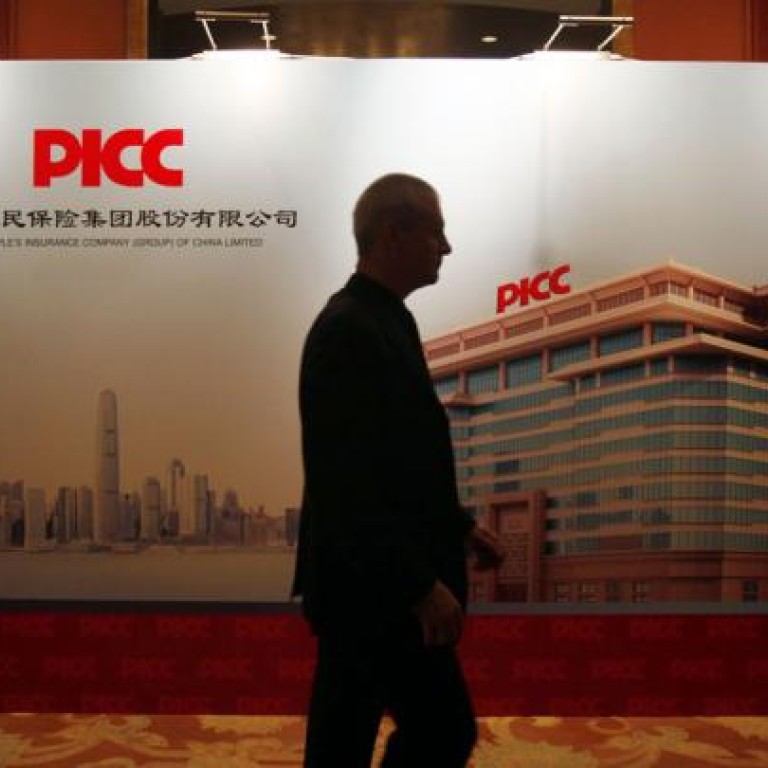
The very curious case of the disappearing reinsurance deal
Shareholders deserve an explanation for why details of a prominent agreement between AIG and PICC P&C have evaporated from view
How can a continuing business worth billions of dollars a year disappear from the public record of a listed company overnight?
From 2003 onwards, PICC Property and Causality (PICC P&C) has been reinsuring a significant portion of its premium with American Insurance Group (AIG). That is the result of an accord in return for AIG's investment in the former's initial public offering in 2003.
Once boosted as a vote of confidence, the deal has not been included in any PICC P&C's public documents since 2007. Neither is there much trace of it in the prospectus of its parent PICC Group this week.
What's the big deal, some may wonder. Given the size of the mainland insurer, the deal probably accounts for only a few per cent of its total business. But if this can disappear overnight, what else can?
To see the significance, one needs to know the details. Between 2004 and 2006, the co-operation with AIG had high-profile disclosure in the company's annual reports.
The detail and size of the reinsurance business with AIG were disclosed under three headings: related party transactions; material contracts and business with the five largest reinsurers.
According to the reports, the reinsurance premium ceded to AIG grew from less than 59 million yuan in 2003 to 739 million yuan in 2006.
Management reports attributed the rise to the co-operation, talked about new co-operative initiatives; and carried photos of AIG officials visiting the company's office.
In the 2007 annual reports, these references were all gone. The only reference to AIG is its 9.9 per cent stake and the directorship of its then senior vice-chairman Edmund Tse on the PICC P&C board.
There is no mention of the change in disclosure policies or the reason for it, which is contrary to Hong Kong accounting standards.
Its parent's prospectus also has hushed up the deal. While emphasising the US$500 million investment made by AIG in its new shares, it vaguely refers to a "technology assistance and co-operation agreement" between AIG and its subsidiary. Details contained in PICC P&C's prospectus have been skipped.
Questions have been e-mailed and faxed to the company on how and why this has happened. No answer has been provided.
Can it be that the company no longer sees AIG as its related party - something defined as "an entity (that) has an interest in the group that gives its significant influence over the group" - in the accounting standard?
However, there has been no change in AIG's holding and Tse's directorship in PICC P&C between 2006 and 2007 that justifies removing the AIG deal from "related party transactions".
Even if this reason stands, it can't explain the disappearance of the whole "material contracts" item - which used to include the AIG deal - from the reports.
Can it be that the company has grown to a size that the deal is no longer considered "material"? There is no apparent justification on the "disappearance" of the deal from the group's official documents. PICC's discontent with the deal is no secret though.
The mainland insurer had to accept a deal that promised AIG a "significant" chunk of its reinsurance premium. It has no termination date. A review is to be done every 15 years.
It ended up reinsuring 30 per cent of its accident and health insurance premium to AIG every year without much negotiation, according to insiders.
To AIG, it is a quantum leap from a nobody in the mainland reinsurance business to the fourth-largest reinsurer of the country's top general insurer and a building of a significant business platform overnight.
The imbalance may not be that obvious at the beginning. However, as PICC P&C grows and the AIG share of business also expands, the embarrassment in Beijing gets increasingly acute.
Based on the size of the mainland insurer's accident and health premiums last year, AIG is estimated to have got no less than two billion yuan (HK$2.47 billion) of reinsurance business from it. That's huge despite the so-called actuary and underwriting assistance it provides.
Theoretically, PICC can divorce AIG by paying a US$100 million break-up fee. But, this cannot be done unless someone at the top - both the state and the company - concedes a mistake has been made.
In Beijing's corridors of power that is almost impossible. The fat for AIG is peanuts when it comes to politics. There is also the stake holding by AIG to be considered. It is not hard to imagine the embarrassment and discredit caused if AIG's significant gain from the deal is made public.
While there is nothing to suggest that the change in PICC P&C's disclosure policy has anything to do with this political concern, the company management owes its shareholders an explanation.

